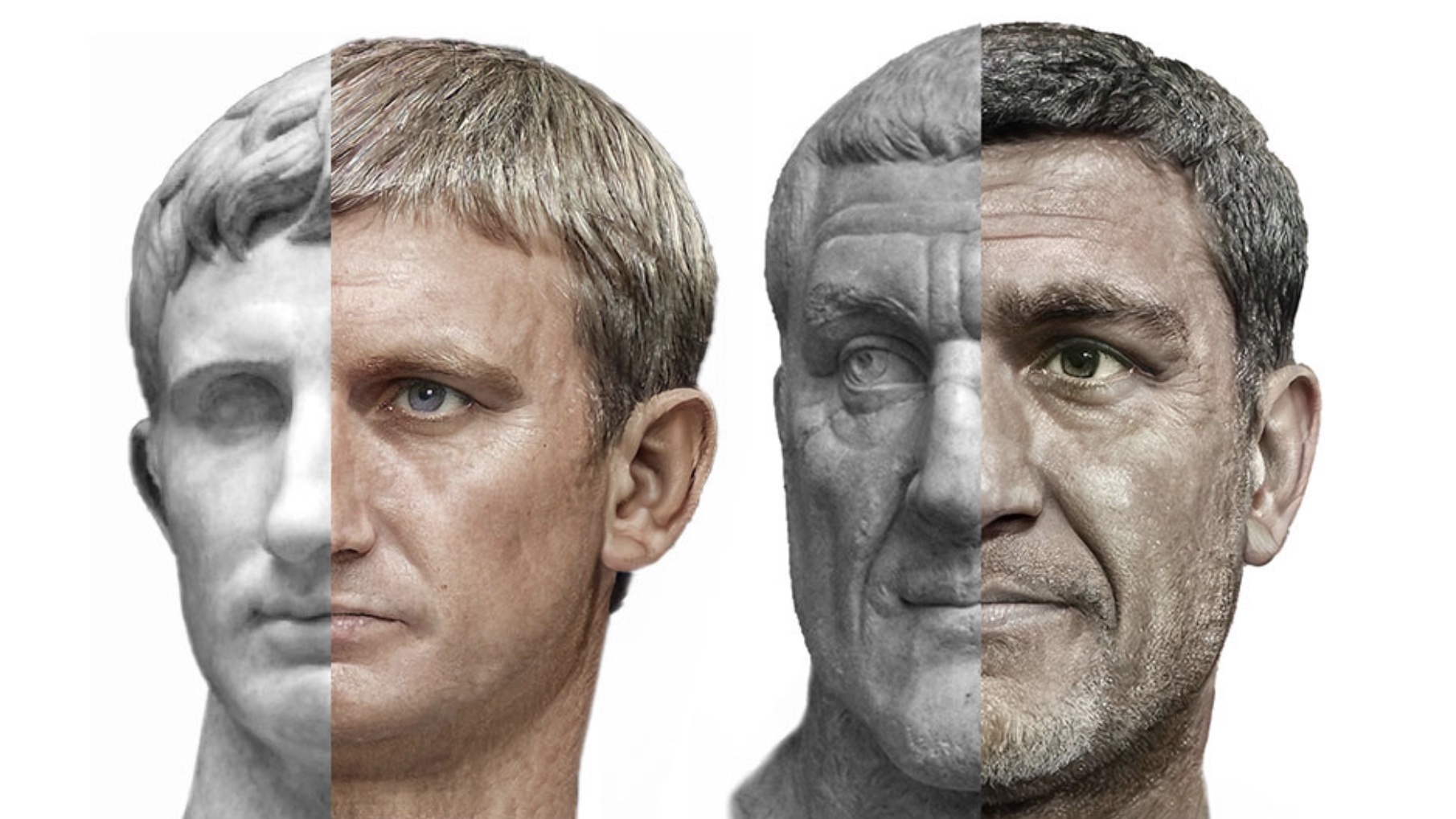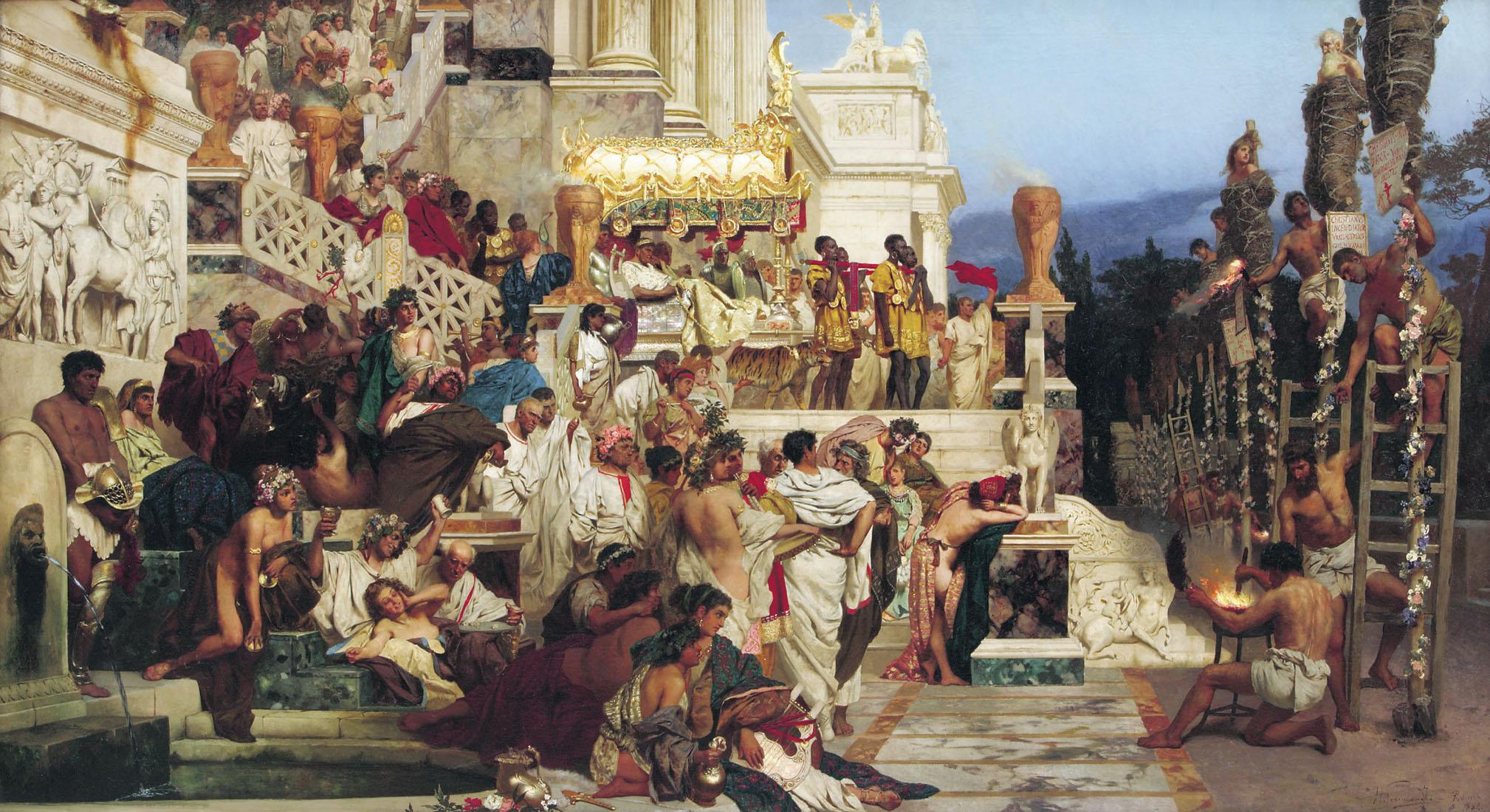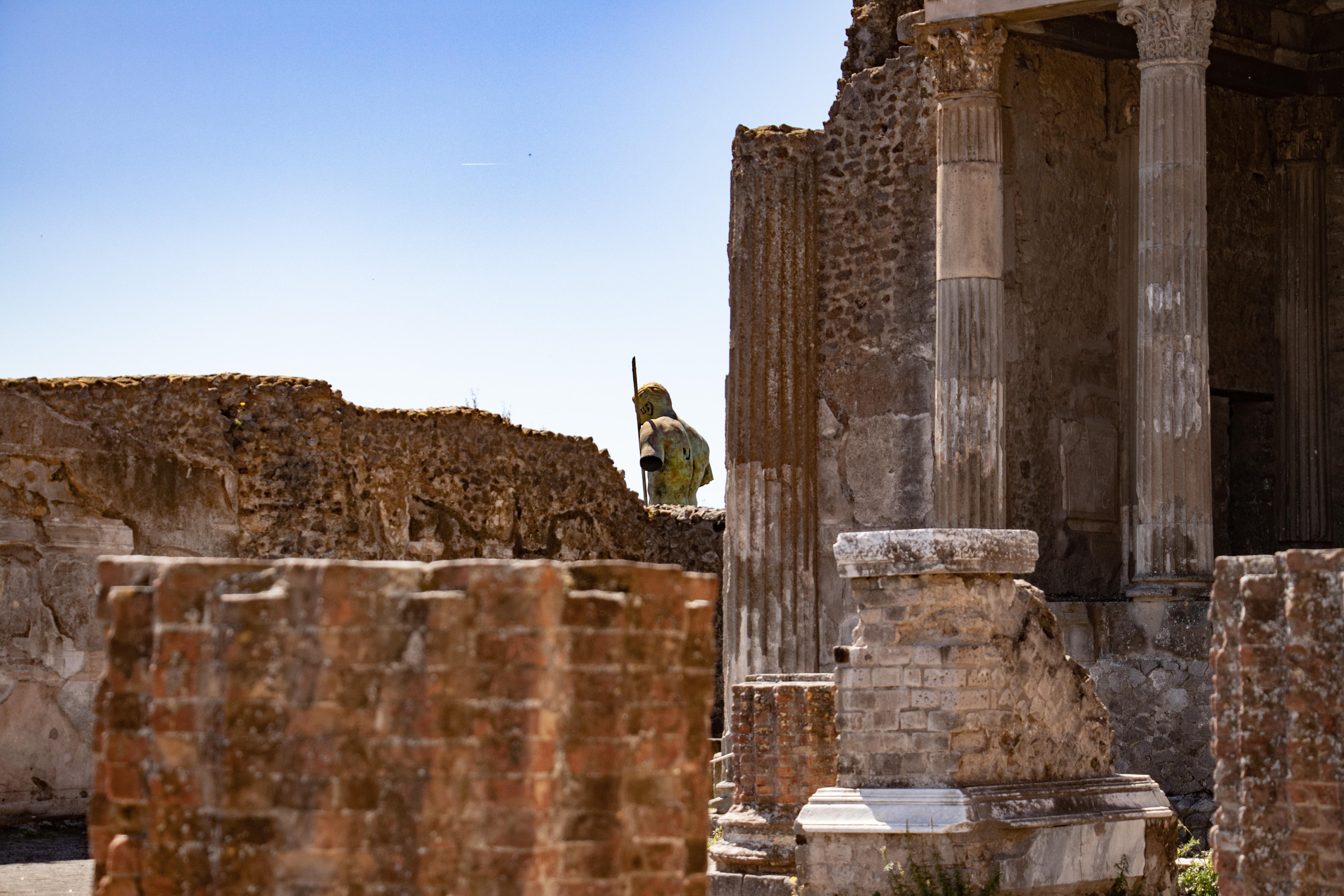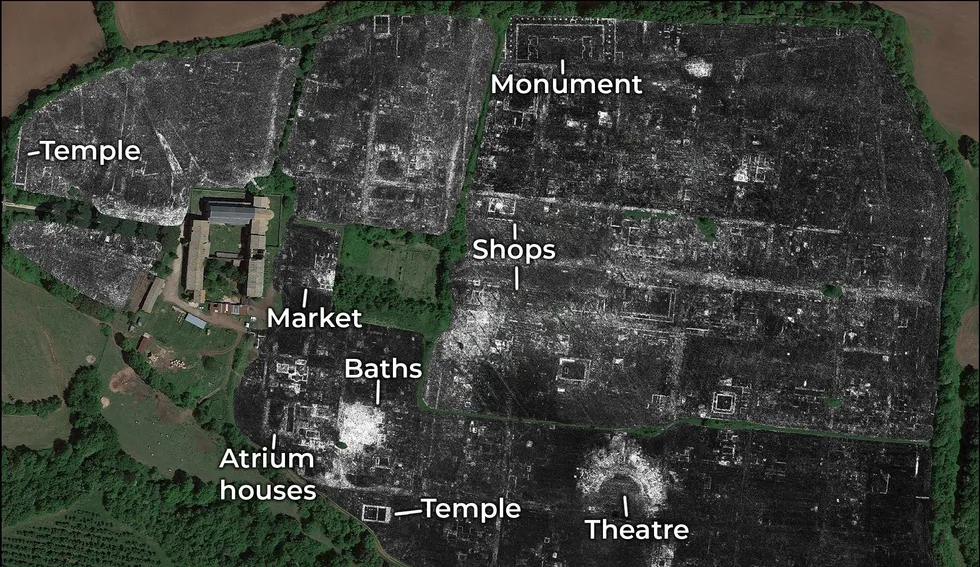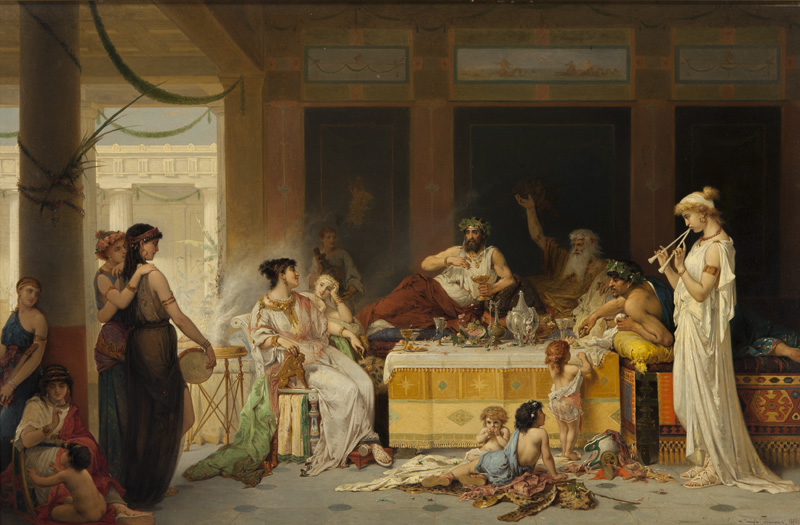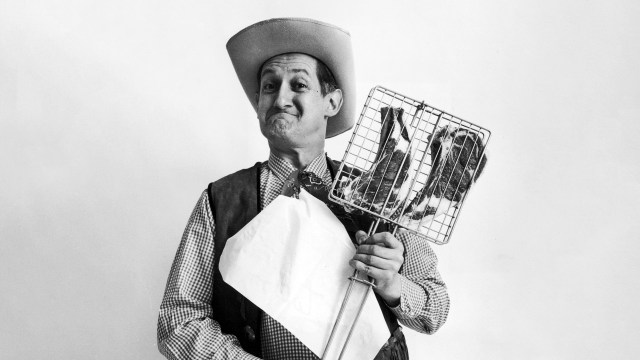Here’s what it was like to live in ancient Rome
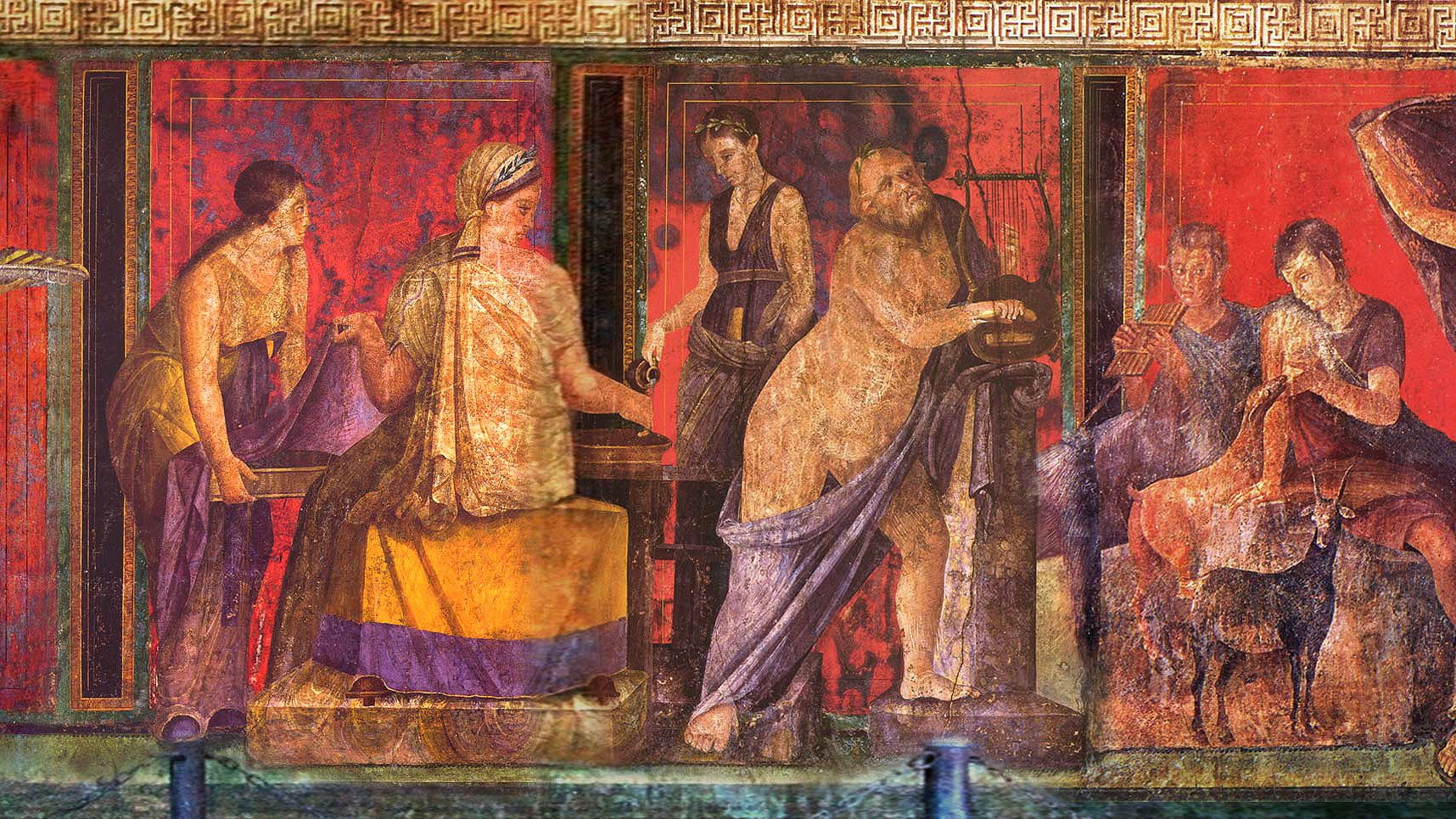
- Historians have been able to piece together a startlingly clear picture of what daily life in ancient Rome was like.
- Romans woke up before dawn, finished work by noon, and spent the afternoons pursuing leisurely activities like swimming and exercising.
- At sundown, Romans would get together for elaborate dinner parties that often went on until late in the evening.
There are, roughly speaking, two types of historians: those who look at the past from afar, recording its wars, epidemics, and recessions; and those who look at the past from up close, studying the lives and livelihoods of ordinary people. Macro-historians help us understand the events that led up to the present moment, while micro-historians try to show us what living during these bygone times actually looked like.
When it comes to the history of ancient Rome, we have all been told that Julius Caesar crossed the Rubicon and declared himself dictator. Likewise, many of us were taught how Emperor Constantine made Christianity the main religion of the Roman Empire after seeing a cross of light appear in the sky during an ill-fated battle.
On the other hand, hardly anyone knows what the average Roman citizen ate for breakfast, when they were expected at work, or how they chose to spend their leisure hours. And that is a shame because micro-historians have been able to piece together a startlingly clear picture of the way in which ancient Romans went about their day.
For us, their accounts offer a window into the past. They treat Rome not as the mystified backdrop to a larger-than-life story, but as a living, breathing setting — a complex urban environment that millions of inhabitants once called their home, replete with dodgy neighborhoods, traffic jams, yearly festivals, and many other things we rarely even consider.
Mornings in ancient Rome
In his 1936 book, Daily Life in Ancient Rome, historian Jérôme Carcopino describes the routines that defined the existence of city-dwellers during the Nerva-Antonine dynasty — an important distinction, not only because customs changed as rapidly in ancient times as they do today, but also because the experience of the townsman differed greatly from the peasant; where one was surrounded by commerce and culture, the other remained tied to the land, which he worked without profit or respite.
According to Carcopino, the citizens of ancient Rome started their day before sunrise. Some, because they had to go to work; others, because the noise of the streets prevented them from sleeping any longer. “The laughter of the passing throng,” wrote the poet Martial in an epigram, “wakes me and Rome is at my bed’s head… Schoolmasters in the morning do not let you live; before daybreak, bakers; the hammers of the coppersmiths all day.”
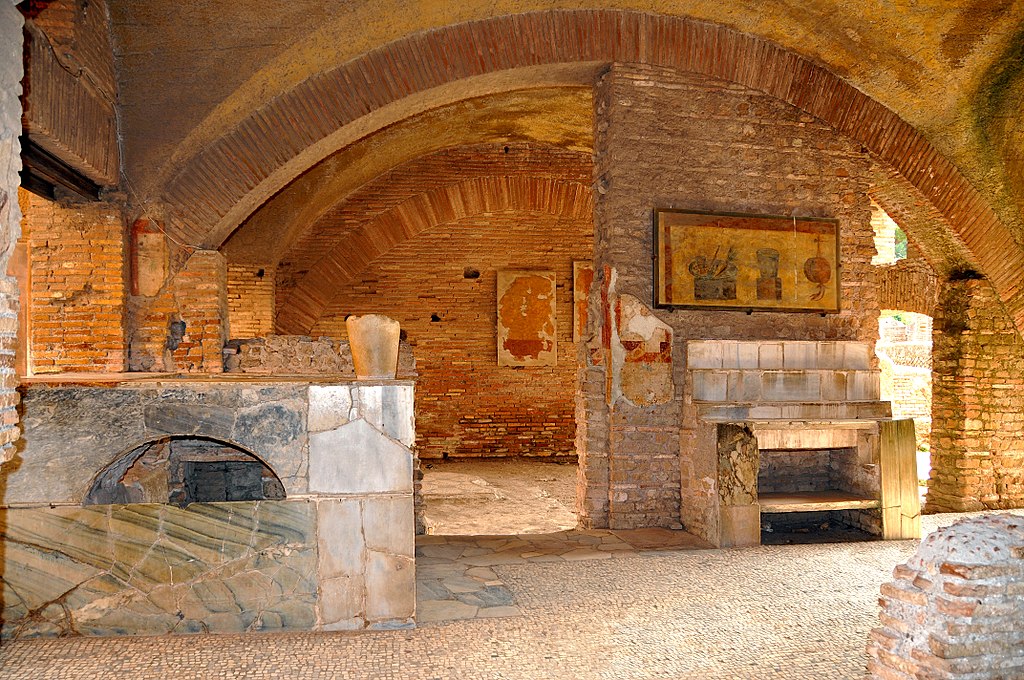
Living in a time before electric light, all Roman citizens were determined to make the most out of their day and finish any and all business before sundown. As such, it should come as no surprise that they wasted no time getting ready in the morning. Their breakfasts usually consisted of a glass of water, and washing was saved for the afternoon, when they would visit the local bathhouses.
Commuting to work could be a job in itself, depending on how far you had to go. Ancient Rome’s rapid expansion and frequent fires turned the city layout into a tangled mess of streets and side roads, many of which were unpaved. To help ease traffic congestion, outside travelers were made to park their carts near the city gates and continue on foot. As decreed by Caesar, the only carts allowed on the street were those of building contractors.
Afternoon activities
For most Romans, the work day began at dawn and ended around noon. The entire afternoon was reserved for recreation. Ancient Rome had a lively leisure industry, meaning citizens could entertain themselves in any number of ways. They might see a play at the theater or watch races at the Circus Maximus. Of course, there was also the Colosseum.
The Colosseum had a diverse program. Aside from the famous gladiatorial matches, spectators could witness skilled hunters take down exotic animals imported from all four corners of the Empire. On rare occasions, the Colosseum floor was flooded and filled with mock shipwrecks so fighters could re-stage historic naval battles. Hungry onlookers could purchase various snacks from concession stands, ranging from almonds and quinces to plums and pomegranates.
“On days when no spectacles or shows were provided,” continues Carcopino, “the Roman filled up the time until supper with strolling or gambling, exercise, or a bath at the thermae.” The thermae, or public bathhouses, were an indispensable part of Roman society. The city had been building them since the third century BC and, by the time of Pliny the Elder, their numbers were well into the thousands.
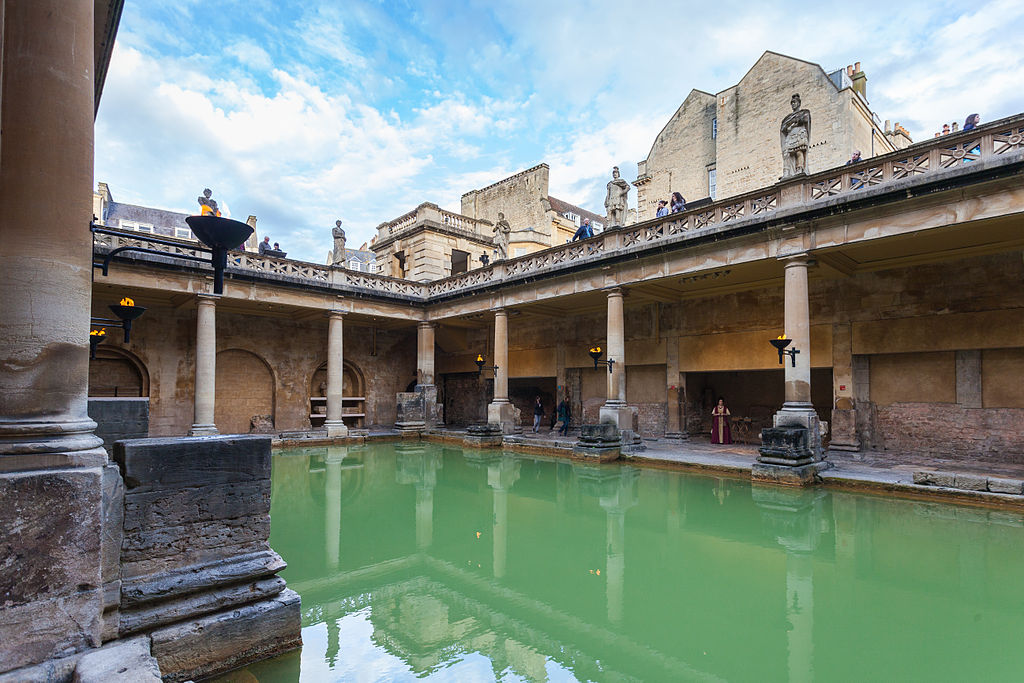
Children entered the bathhouses free of charge, while adults paid around half a cent, a microscopic sum, says Carcopino. “The primary feature of these thermae was every type of bath that ingenuity could devise,” including hot baths, cold baths, hot air baths, and swimming pools. Most baths also included enclosed gardens, promenades, and space to exercise. The Romans practiced several sports, including a type of tennis played with the palm of the hand instead of a racquet, and a ball game called harpastum that is somewhat comparable to rugby.
Water was carried in through the city’s aqueducts and heated via a complex of furnaces hidden within the walls or underneath the floors. They were tremendous feats of engineering and welcoming backdrops for social get-togethers. With so many different things to do, it was not uncommon for Roman citizens to spend multiple hours at the baths.
Supper in ancient Rome
The baths closed at sundown, though most left before that, so they would have ample time to eat. Supper was the most important meal in a Roman’s day, considering breakfast consisted of water and lunch of bread with cheese and cold cuts. For patricians, supper could last anywhere between one and four hours. Banquets held by the most lavish emperors, meanwhile, were known to go on until midnight, sometimes even the early hours of the morning.
If you were well-off, supper was served in a dining room. In ancient Rome, dining rooms contained not tables and chairs but reclining couches. These couches were arranged around square tables where the food would be laid out. Willing and able to defy the forces of gravity, Romans ate while lying on their side, their weight supported on one arm while the other was used to consume food.
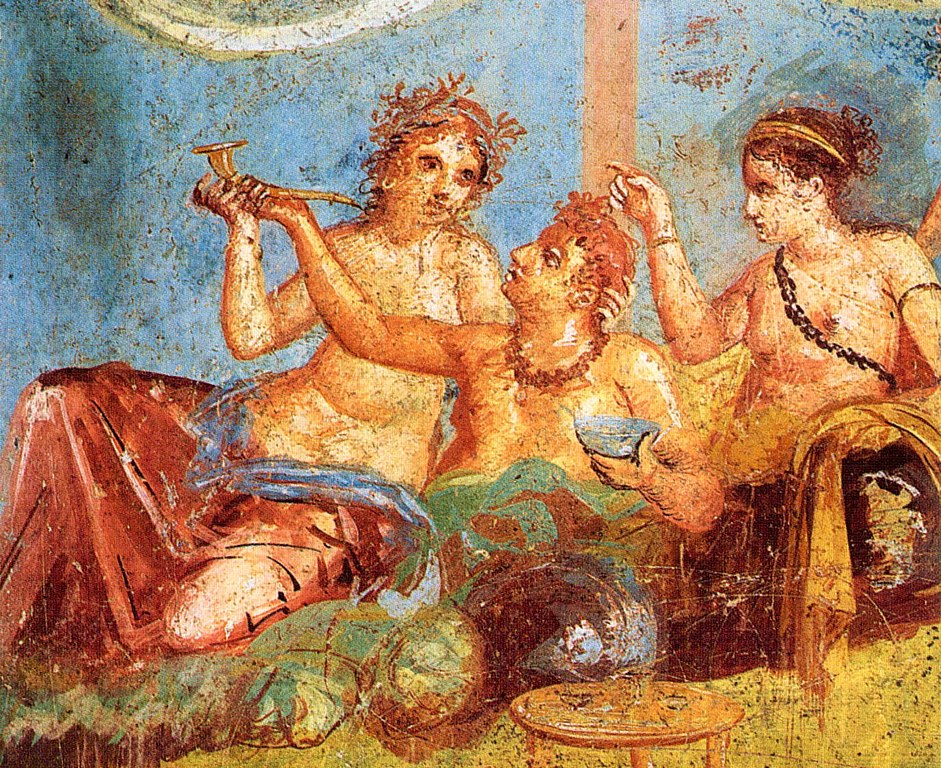
Households frequently invited guests. When they did, the host was expected to provide knives and spoons. These were used to prepare and serve food but not eat it. This the Romans did primarily with their hands. As a consequence of that custom, food was typically served in bite-sized format. Furthermore, it was considered proper etiquette for a Roman to wash his hands before and after eating, and preferably between courses as well.
Respectable suppers consisted of no less than seven courses: hors d’oeuvres, three entrees, two roasts, and one dessert. The primary sources cited by Carcopino mention dishes like dormice rolled in honey and poppy seeds and suckling pig stuffed with dates. Greatest of all delicacies was the red mullet, a fish so difficult to catch that serving them could sometimes send a host into bankruptcy.
During both dinner and supper, Romans drank various wines. These included honey wine and wine blended with resin and pine pitch. The latter variety was diluted by pouring it into a mixing bowl through a funnel strainer, and “anyone who drank these heavy wines neat was considered abnormal and vicious, a mark for contumely.”
Rome at night
While patricians have become famous for their extravagance, plebeians valued modesty. Painted on the walls of one Pompeii resident were dictums that spelled out proper dining etiquette:
“Spare thy neighbor’s wife lascivious glances and ogling flatteries, and let modesty dwell in thy mouth… Be amiable and abstain from odious brawlings if thou canst. If not, let thy steps bear thee back again to thine own home.”
That walk home, however, was by no means a leisurely stroll, especially not if the banquet went on well into the evening. “In normal times,” writes Carcopino, “night fell over the city like the shadow of a great danger… everyone fled to his home, shut himself in, and barricaded the entrance. The shops fell silent, safety chains were drawn across behind the leaves of the doors; the shutters of the flats were closed and the pots of flowers withdrawn from the windows they had adorned.”
Wealthy Romans, having exchanged goodbyes with their gracious hosts, were escorted home by an entourage of slaves with torches. Others had to find their way back in the dark, for there were no oil lamps outside to light the way. Most plebeians were left at the mercy of the city’s watchmen. While these guards patrolled the city from dusk till dawn, ancient Rome was way too vast to monitor in its entirety.
A day in the life of ancient Rome
The daily routines of ancient Romans were markedly different from those of modern Europeans or even Italians. Thermae have long ceased to be the bedrock of Western civilization, and though lavish dinner parties still occur, they are now the exception rather than the norm. At the same time, we cannot help but see part of ourselves in this long-gone civilization, from the hustle and bustle that comes with living in a large city to the many social institutions designed to keep us sane and foster a sense of community.
